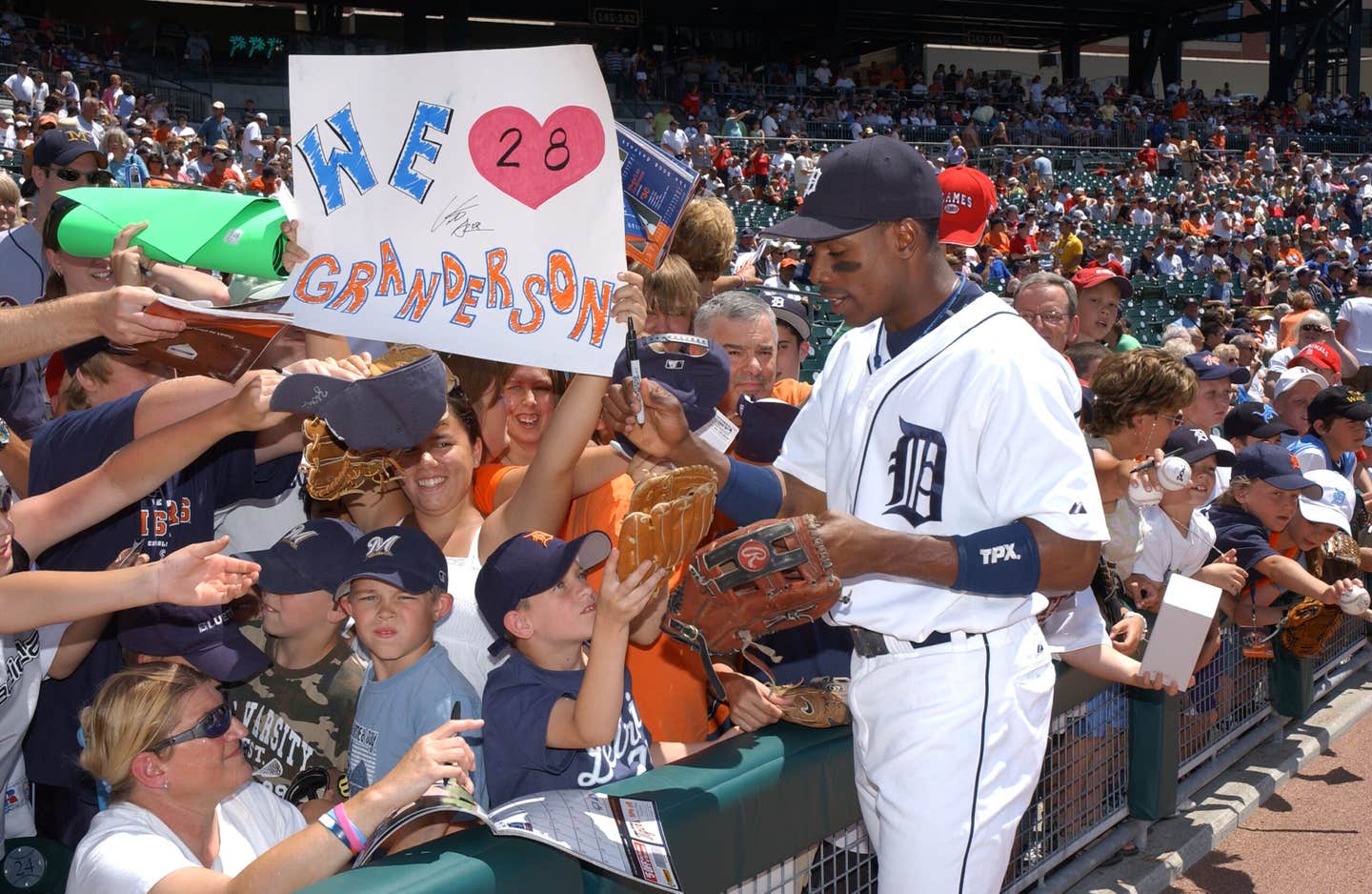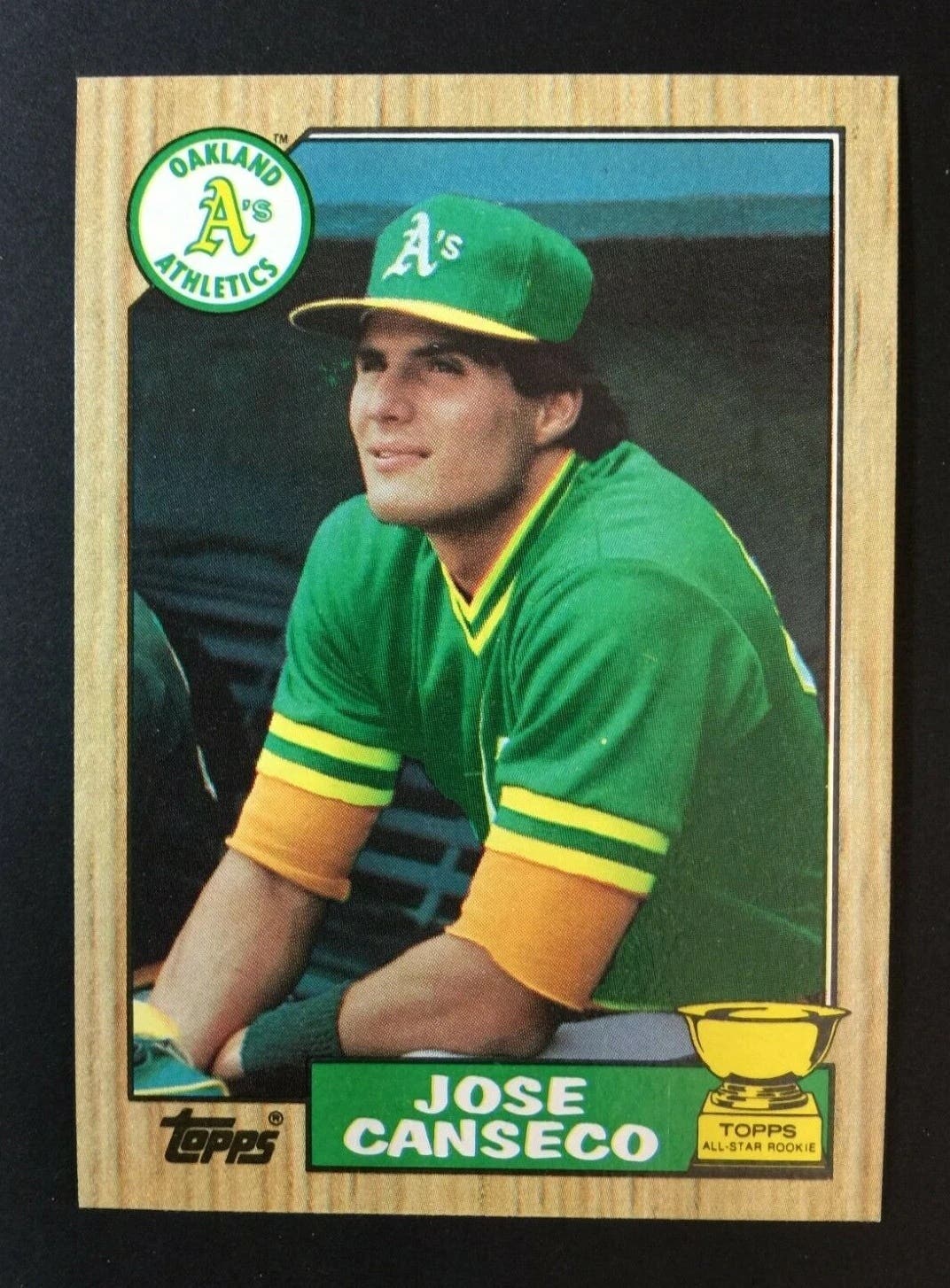Collector Stories
Revisiting Reggie Jackson and his place in the hobby
It’s almost unfathomable that it’s been 33 years since Reggie Jackson made history on a cool October evening in the Bronx. And almost equally incomprehensible is what Jackson accomplished that night, in what will go down in the history books as one of the best individual performances in World Series history.
After hitting his second home run of the 1977 World Series in his final at-bat of Game 5 two days earlier on the West Coast, Los Angeles Dodgers Game 6 starter Burt Hooton walked Reggie Jackson on four straight pitches in his first at-bat as the Series shifted back to Yankee Stadium.
Call it a premonition, a smart pitching approach, or simply the only safe option, Hooton’s original plan of attack against the Yankee slugger quickly backfired when Chris Chambliss followed with a two-run home run to even the score at 2-2. Hooton and the Dodgers later opted to challenge Jackson and were quickly punished for doing so.
While the 1977 World Series had plenty of fireworks, it will always be remembered for the amazing performance of one man. There was the controversial play at home plate and the dramatic 12-inning single by Paul Blair to give the Yanks the victory in Game 1. And there were the Los Angeles bats coming to life in Game 2, as four different Dodgers homered to even the series. There was even a heated argument on the mound between a player and his manager with the biggest surprise being the battle of words involving L.A. skipper Tommy Lasorda and not New York’s confrontational front man Billy Martin. But despite subplots aplenty, make no mistake about it, this World Series belonged to Reggie Jackson.
“The air was electric in Yankee Stadium that night, there hadn’t been a World Championship there in 15 years,” recalled Marty Appel, the long-time Yankees media relations director. “And it just felt like this was going to be the night.”
It seems some of the 56,407 in attendance knew they were in for something special that night, too, and Jackson made sure those feelings came to fruition.
For former MLB catcher and HOF broadcaster Joe Garagiola, the man who practically single-handedly propelled the Yankees to their 21st World Championship was simply a one-of-kind player who often elevated his game on the sport’s biggest stage.
“Just like everybody else, I was amazed at what I saw that night,” Garagiola said. “The network (NBC) didn’t have that Series so I was watching it at my home in Arizona. Reggie was always good for the dramatics, whether it be in the clubhouse or up at the plate. Nothing bothered him, he was always in control. He was a special individual that’s for sure.”
Jackson’s .450 average, 1.250 slugging percentage and World Series record five home runs made him the runaway MVP winner, as the Yankees erased the sour taste of a four-game sweep at the hands of the Reds in the 1976 Series with the six-game victory over the Dodgers a year later. The MVP honors made Jackson the first player to receive the award for two different teams (he also won the award in 1973 with Oakland), and while Jackson was a force throughout the Series, his unworldly performance in Game 6 alone likely would’ve landed him the hardware.
After the Yankees were embarrassed by the Big Red Machine in the 1976 Series, owner George Steinbrenner spent the offseason and much of the regular season plugging holes via trades to ensure the 1977 campaign would be different. The biggest of the roster upgrades was the $3 million acquisition of Jackson via the first mass-market, free agent draft. Steinbrenner realized he would not only re-energize the fan base by signing one of the game’s top sluggers but he would solidify an already potent offense with another big bat.
It was mission accomplished on both fronts, as Jackson helped keep the old Yankee Stadium filled to capacity while putting up All-Star quality numbers at the plate. Jackson hit .286 with 32 home runs and 110 RBIs, earned a spot on the mid-summer classic roster for the seventh straight season and helped New York to 100 regular-season wins and a second-straight American League East crown.
After a forgettable American League Divisional Series win against Kansas City in which he hit just .125 with no home runs and one lone RBI, Jackson somehow managed to reclaim his power stroke just as the Yankees took their once-familiar place on baseball’s grandest stage.
Jackson’s amazing three home runs in one World Series game feat had only been accomplished by one man prior to that memorable October evening. That man was none other than Babe Ruth, who accomplished the feat twice. And now more than three decades later, the World Series home run trifecta remains a two-man club.
Despite a Hall of Fame career that included 563 career home runs, 1,702 RBIs and nearly 3,000 hits, when you think Reggie Jackson, you think Game 6.
“It totally, totally, defined his career. He became a big-time player that night – Mr. October – which was what Thurman (Munson) had sarcastically called him earlier in the year. It made you think of Reggie as an elite home run hitter, except if you look it up – and I know you will – he never hit 30 home runs two years in a row. Never. So his big lifetime total was largely due to longevity. But with this game, everyone thought of him as a home run guy.”
And how could you not look at Jackson as a home run hitter after his Game 6 effort.
The Home Runs
Perhaps because Hooton had walked him on four pitches in the first inning, Jackson came to the plate looking to be aggressive and with the understanding that Hooton would likely look to get ahead in the count in at-bat No. 2. With teammate Munson on first, the Yankees slugger lined a Hooton fastball into the seats in right-center field to put New York up, 4-3, and send Hooton to the showers. But Jackson was just getting started.
Chambliss followed Jackson’s rocket with a double off reliever Elias Sosa, and Lou Pinella later added a sacrifice fly to bring home Chambliss and give the Yankees a 5-3 advantage through four innings, one they would never relinquish.
With Sosa still on the mound in the following inning, the legend of Reginald Martinez Jackson continued to grow.
With two outs and Willie Randolph on first after drawing a walk earlier in the fifth, Jackson lined a Sosa offering into almost the identical spot in right field as his first for home run No. 2. With the Yanks enjoying a 7-3 cushion and New York starter Mike Torrez cruising along after a rocky start, the only real question remaining in this game was if Jackson would rewrite the history books. And in the eighth inning, the Yankee faithful got their answer and the a chance to be a part of history.
As he so often did, Jackson saved his best for last. With many in the crowd rising to their feet and chants of “Reg-Gie, Reg-Gie” resonating throughout the house that Ruth built, Jackson stepped in to face veteran Charlie Hough. Never one to keep the fans waiting, Jackson quickly ended the suspense by obliterating a Hough knuckleball. The ball eventually came crashing down in “The Black,” the seat-less area beyond the center field wall used to create a better sight line for the batter. While the estimated distance of the mammoth blast varies depending on who’s asked, even the stingiest of approximations had the shot measured at 450 feet.
The man for whom the structure had been named would have been proud.
Always looking to add to the lore of the historic feat, Jackson polished up the story hours later when recalling the final blast with a group of reporters.
“How far did that last homer go?’’ he asked.
“About 450 feet,’’ one of the reporters said.
“Make it 475,’’ he said. ‘’It sounds better.’’
So after enduring a 15-year drought, a blackout and the terror of a serial killer, the city that never sleeps happily turned its focus on the latest in a long line of pinstriped heroes. For at that triumphant moment, Reggie Jackson was viewed on the same lofty plateau of the all the immortals that had taken to the field before him.
“He put himself in Yankee history forever that night, and it helped him get his uniform number retired, a plaque in Monument Park, and an NY on his cap at the Hall of Fame, all for just five seasons with the Yankees, one of which was strike-shortened,” Appel said. “You don’t quite say Ruth-Gehrig-DiMaggio-Mantle-Jackson, but you do at least pause and consider it.”
Scott Fragale is the editor of Tuff Stuff's Sports Collectors Monthly
MORE RESOURCES FOR SPORTS COLLECTORS
- Get current market values for 400,000+ baseball cards issued between '81 & '09
- Get the Ultimate Yankee package
- Interact with other sports collectors in Tuff Stuff's online forum
- Sign up for your FREE email newsletter from Tuff Stuff
- Read the latest 7th Inning Stretch Blog from Tuff Stuff Editor Scott Fragale








